Media | Articles
The ’91 Buick Regal failed to put a “W” on GM’s suffering scorecard
The story of the GM10 platform, also known the W-body, is a tragedy on par with that of Macbeth, a tale intertwined with the larger issue Scotland’s moral order. Is the car platform underneath the 1980s Buick Regal so significant? Many would disagree, but consider the staggering sum of of dollars in play; since the start of development work on the GM10 in 1982, a mind-numbing seven billion dollars was thrown at the project. At the same time, it lacked a dedicated team for leveraging the General’s deep reserves of staff and resources, and the dream of engineering a world-beating mid-sized platform was dashed by strategic missteps. Pontiac’s Chief engineer Robert Dorn was the platform’s project manager, and he struggled for clout in a post-1984 corporate landscape that shook GM up like a smoothie.
Part of CEO Roger Smith’s initiative was to organize GM into separate business divisions. Dorn worked under the new CPC (Chevrolet-Pontiac-Canada) division, but his job was to make a mid-size vehicle that would assert GM’s dominance for every brand (except Cadillac). It was a tall order to match market dominance forged from years of success with the A-bodies we know and love (Cutlass, Chevelle, etc.). Plus, global threats were now on the horizon: Toyota was gaining ground with the third-generation Camry, Accords were corruptingly good, and America was downright bullish on Ford’s Taurus. Even worse, Dorn was up against the rest of GM’s new front-wheel drive platforms. The W-body had internal enemies in the A-body, L-Body, and the N-body at one time or another in its long lifecycle.
While the sedans pictured above were introduced in 1990, the GM10 coupes had a two-year head start. This was strategic misstep number one: failing to identify the degree to which markets were disinterested in big coupes like this. To borrow a term from drag racing, this wasn’t a hole-shot launch, and model year 1988 ended with a depressing figure of 100 + days of inventory on dealer’s lots. Yikes.
According to Rude Awakening by Maryann Keller, this misfire led to “temporary plant closures to reduce the surplus dealer inventories.” The sedans, once they arrived, didn’t fare significantly better. They lacked key selling points such as Chrysler-worthy airbags, Honda-like engines, or Toyota levels of customer satisfaction. The competition was collectively reinventing how American families hit the highways, while GM was still struggling with relevancy after the 1984 reorganization.
Honda, Toyota, and Ford subsequently feasted on the carcass of GM’s former market dominance, whose share dropped precipitously in the 1980s. The GM10’s subsequent redesign (part of that multi-billion dollar investment) was a mixed bag: more conventional rear suspension (note the transverse leaf spring design in the Lumina photo above) but also more milquetoast styling. The predicament changed little, as Ford dominated the value/fleet side of this market with the Taurus, while Honda Accord/Toyota Camry were the standard-bearers for premium family sedans.
Marketplace
Buy and sell classics with confidence
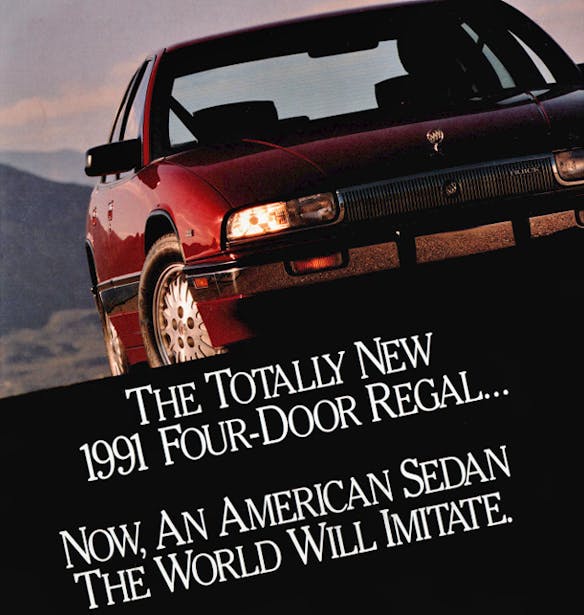
We’ve finally arrived at Buick, which was responsible for building the most prestigious car on the GM10 platform: the Regal. Its sights were set higher than the V-6 Taurus or a four-banger Honda. The Regal Coupe may have initially faltered in 1988, but the sedan came with larger engines (3.1 and 3.8-liters) and the top-spec Gran Sport looked like a modern take on what made the original A-body Skylark GS so special during the muscle car era. With big alloy wheels and a firm suspension, the W-body Regal had the hardware to be a modern grand tourer. However, let’s recall what the folks at Motorweek thought about it:
Oh dear. You know there’s trouble afoot when John Davis says “don’t blame them, the GM10 Regal design was finalized before the current Buick brass came to power,” within the first two minutes of the road test. It’s a generous way to suggest that other automakers were making superior cars in the same (or lesser) competitive set, but I question the review’s real-world effectiveness. How many PBS watchers snickered, turned off the TV, and looked elsewhere for their next mid-luxury family sedan?
Those who didn’t grab the remote for their Magnavox might have ultimately appreciated the Regal GS’ luxurious interior and futuristic dashboard, something we’d see eventually in modern luxury EVs. (With touchscreens, of course, instead of recessed black trim.) The CD player, much like its trucky GMT400 cousin, is mounted far away from the rest of the audio controls. The dual-mode HVAC was ahead of its time, as was the cupholder located in the center console. But the lack of airbags was a dealbreaker for many, even with the Regal GS’ respectable thrust and competent handling. The price was on point, compared to other luxury brands in the segment, but conquest sales would in the end prove difficult.
Buick’s overall sales dropped on the regular as the GM10 transitioned into the ubiquitous W-body, and it’s still a bit hard to believe that we can thank sales in China for keeping the brand afloat during General Motor’s bankruptcy. (China is still a big market for Buick today.) But that was twenty years after the GM10’s introduction in a sea of globalized competitors hungry for their market share. And it was forty years after “the good old days” of General Motor’s market dominance: that idyllic time when products from Japan and China would be laughed out of darn near every American household. Time can be a cruel mistress, and the launch of the GM10 is evidence of the auto giant’s failure to appreciate just how much times had changed. Though it was in many ways a solid-performing mid-sizer, one of time’s victims, in the end, was the ’91 Buick Regal Gran Sport.
***
Check out the Hagerty Media homepage so you don’t miss a single story, or better yet, bookmark it. To get our best stories delivered right to your inbox, subscribe to our newsletters.
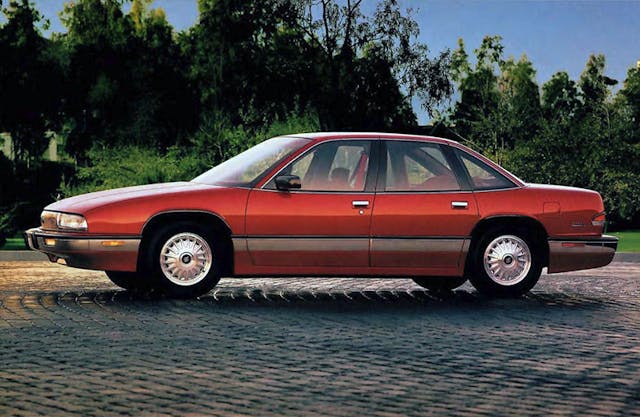
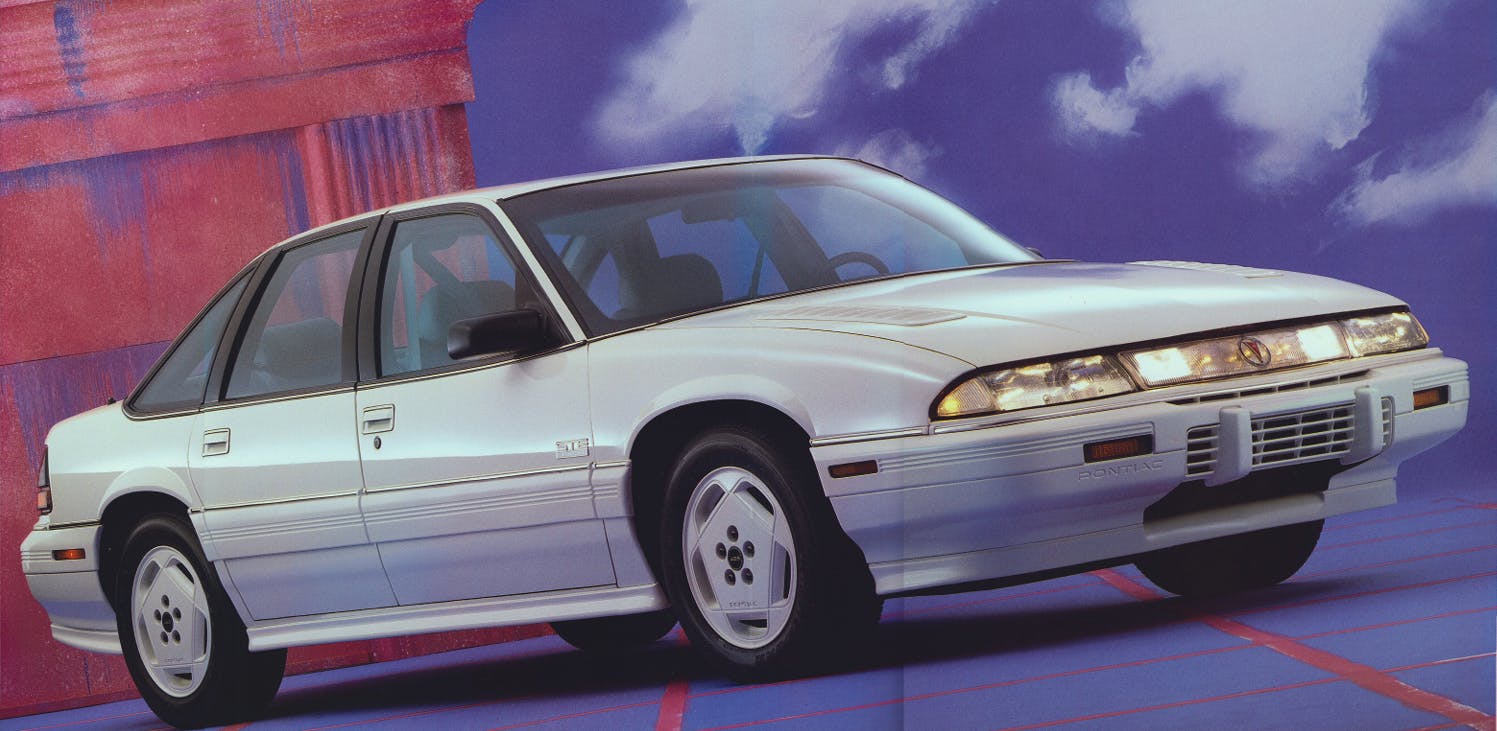

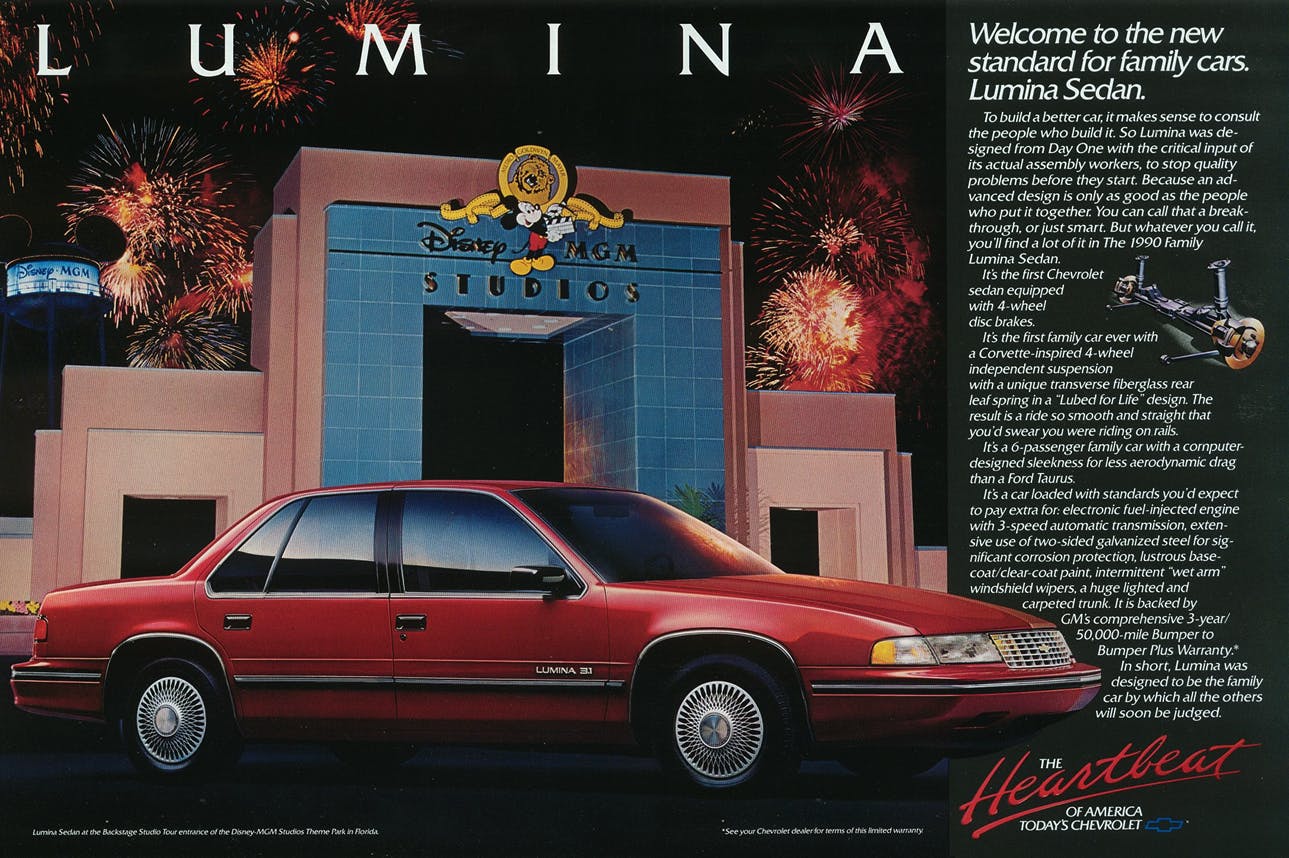






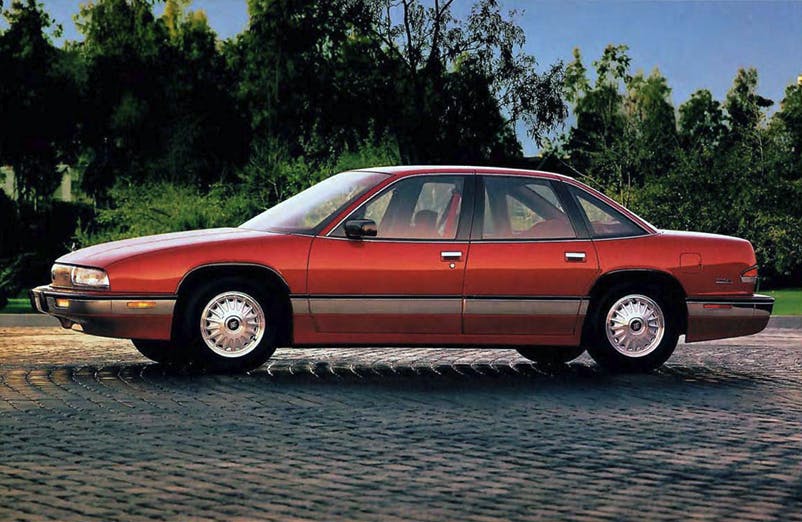
As a Buick guy the 80’s to early 90’s were tough. Only Park Aves, Lesabres and to a lesser extent the square Riv of the era were good. Ford was quite advanced then (had three manual SHOs) and so was Mopar when the cab forwards came out. Had many rentals of the GM-10–ugh! I loved the next gen Rivs and Parks of the mid-late 90’s. They were great cars-had an 01′ Ultra for many years, good buddy had a 98′ Riv. You could tell they were styled well by the same crew. Then Buick turned basically Chinese. I don’t want cars designed for or built by them-looking at you Envision. Looking for a Boattail Riv…thats a Buick!!! Thanks for the (sordid) history lesson Sajeev! Was making parts for Allison airplane engines back then–the GM reorg of the 80’s screwed them up too.
Wow, had no idea the reorg went that far down the organization. Thanks for sharing, Mike.
My grandmother bought a new ‘93 Regal Custom, that I inherited around 90k had the grand touring package w all of the Gran Sport goodies without the body cladding. It was a superior car to my friends fleet of Ford Tauri and anything Chrysler. Great power, handling 30mog highway and comfort plus it look great in Jadestone Metallic w the huge tires. At the same time my dad had a ‘96 Grand Prix SE, 3.1 engine. I also got that car at 180k still looked and ran great. Both cars never had any major issues.
I was unfortunate enough to have to deal with a ’91 Regal Custom that my father in law gave us. It arrived on a roll-back, locked in park despite being able to go into drive and reverse. Tearing the transaxle down revealed an issue with the park pawl shaft wherein the pawl had sheared the internal splines and stayed engaged in the park sprocket. A quick dab from the mig gun fixed that problem, but the electrical gremlins would never go away, even with replacing the PCM three times (with factory-refurbished units) and the engine wiring harness four times. It was ultimately turned into a cube at a local salvage yard. Too bad, because it was a very nice road car, averaging 28 to 30 mpg and a couch-comfy seats.
It was really a nice car maybe not pretty looking, but it was a well engineered automobile, shame we couldn’t find a real mechanic to fix it the first time
During the 80s, I think GM became more evolutionary vs. revolutionary. After being burned in the early 80s with the X cars. GM finally had the A Body Celebrity, 6000, Ciera, and Century and it seemed to finally get all the kinks worked out and sales where good and it was a success for the company after some very lean times.
I have to remind myself that in the late 70s and early 80s GM’s two door Cutlass and Regals where selling like hot cakes until they weren’t. I can see the GM Brass sitting around and looking at the A Body sedans and the G Body coupes going “Ok so we need to plan the next mid-size sedan and coupe we know the A Body works and more cutting edge the G body, lets do that again and upgrade it.” To me the W10 platform was the next evolution, combining the two models into one platform.
It was almost like GM targeted itself vs. the competition. If you look at the GM10 and compare it to the A Body and G Body then it was an evolution. However, Ford moved the bar far ahead with the Taurus, and so did the Camry and Acord.
When GM10 finally came out, the field had moved on.
The demographic that pushed Cutlass sales to top-of-charts 74-82 moved on to minivans in 1984. –though Taurus and other makes did carve up the “intermediate market” dominance of GM pretty good.
That same demographic currently gives us the crossover/suv plague or is using a full-size crew cab 4×4 as a station wagon.
I’m surprised no one has mentioned that, with the Taurus/ Sable and Chrysler LH bodies, there were no 2-doors. I guess the guys at GM didn’t get that memo..
As a Chevy-Olds salesperson at the time, I can tell you I have few fond memories of these cars. In lieu of air bags, we had combo lap/shoulder belts attached to the doors (thank God they could be unfastened). Every time I opened the driver’s door, the belt would catch the pen clipped to my shirt pocket and send it flying out into space. Retrieving that ersatz Mont Blanc from the nearest mud puddle/ snow bank/ windshield-wiper well of a Grand Marquis was NOT my idea of having fun. And then there was having to stop a W-body just to operate the indecipherable A/C controls. Attempting to do that while driving was far more dangerous than dialing a cel phone AND eating a Big Mac at the same time.
These cars were lacking for sure. We had a 1990 GP coupe and it was an advanced looking car but it was just not executed well.
But to be fair most of the cars in this era were a hot mess. Everyone was going FWD with different results. Some cars did well and some failed. The Le Sabre actually benefited.
By the end of the 90’s the new management at GM did fix the W and it became a very good car and restored the 3800 engine as one of the best, easiest to work on and cheap to maintain.
But money problems made it tough to make money on these cars. GM was broke long before the bailout.
What is interesting is many of these cars are still on the road. Not pretty and in need of work but still running when other cars from Honda and Toyota are gone due because of the need for more expensive engine repairs.
But in the end the CUV killed all the sedans. The CUV was basically the same platforms but taller and more room made them more comfortable and with much more utility.
GM got the sedans better by my 04 GTP and really right by by 08 Malibu that I just traded. It was just replaced by a Blazer that is about the size of my Bu but much more unusable.
But the Fords of this era and Chryslers were a mess. The Tuarus today is gone try to find many and unless it is out west they rusted away.
GM did also get the Barretta right. The 90’s Bonneville was good the 88 was forgettable. The Cadillac and failed but the Park Ave did ok.
Dorn had been at GM for many years and came from Pontiac. It was not so much him but was little he was given to work with.
The day they released the Grand Prix FWD was the day the Pontiac head Mike Losh rolled one over at the press meeting. Not a good start.
The best thing that came out of this mess was Dale Earnhardt still was able to win in a Celebrity body. If the street car had remained RWD it may have won too.
The supercharged Regal GS was a great car. Comfortable and quick.
We have owned two 2nd-gen Grand Prixes (GTP coupe and GT sedan), and a 3rd-gen Lacrosse Super, and found them all to be good cars. Sounds like the first-gen got off to a rough start, though.
I cherry picked GM platforms through the 80’s & 90’s. I had sales jobs that put 35k+ miles / year on my cars, so I traded often, as they were unreliable with more than 50k. I had a couple of the Pontiac 6000 STE sedans on the A chassis, a couple of the Buick LeSabers, both sedan and coupe, on the W chassis, and 3 of the Pontiac Bonneville SSE’s with the sturdy 3800 engine, also W siblings. Those were the pretty well designed and executed GM platforms. I looked at, but dismissed the L and N cousins, for value and performance issues. Never a fan of the “jelly bean” styling of Fords and Chryslers, and with GM I knew the fail points. I still marvel at the tiny brake pads that needed replacing every 12-15K! GM was clearly counting pennies instead of designing and executing for the future. Last GM I owned was an ’05 Silverado that I traded in on the first Ridgeline after six months of issues (electrical gremlins and driveline clunks), and never looked back. Smith led GM down a road of flaky engineering, and questionable build quality that pushed buyers to the imports.
I fail to see the same attraction everyone has to the suv and 4 door pickups. Some even put L88 hood scoops and stripes on the pickups.
The concept of sharp went out when the 4doors came in.
When these cars were introduced, I was a tech in a Buick Pontiac GMC dealership. The Pontiac was particularly popular and the Buick sold well. The sedans were more popular than the 2 doors. I’m surprised to hear that these were not considered a success. The next generation W body cars were even more popular. Demand for the Pontiac was much greater than the supply. I suggested to several customers that they should consider the Buick. I felt it was better than the Grand Prix for only a little more money. I was always told that the Regal GS was an old person’s car. That seems to be a big problem.
The last W body we had was fantastic. But still after 3 Epsilon based models, I could never go back.